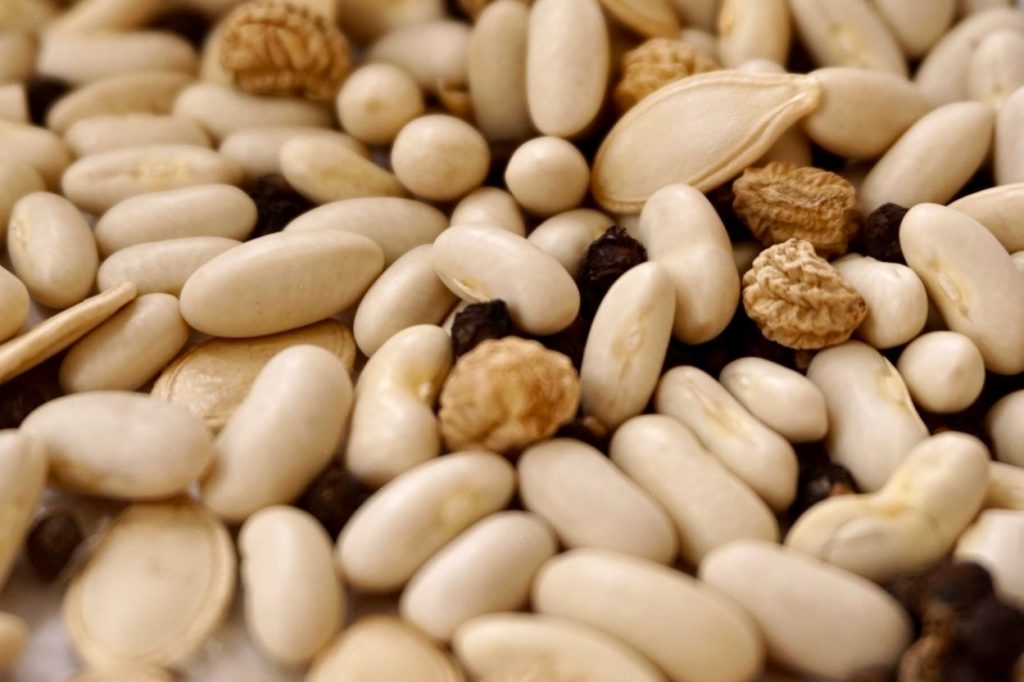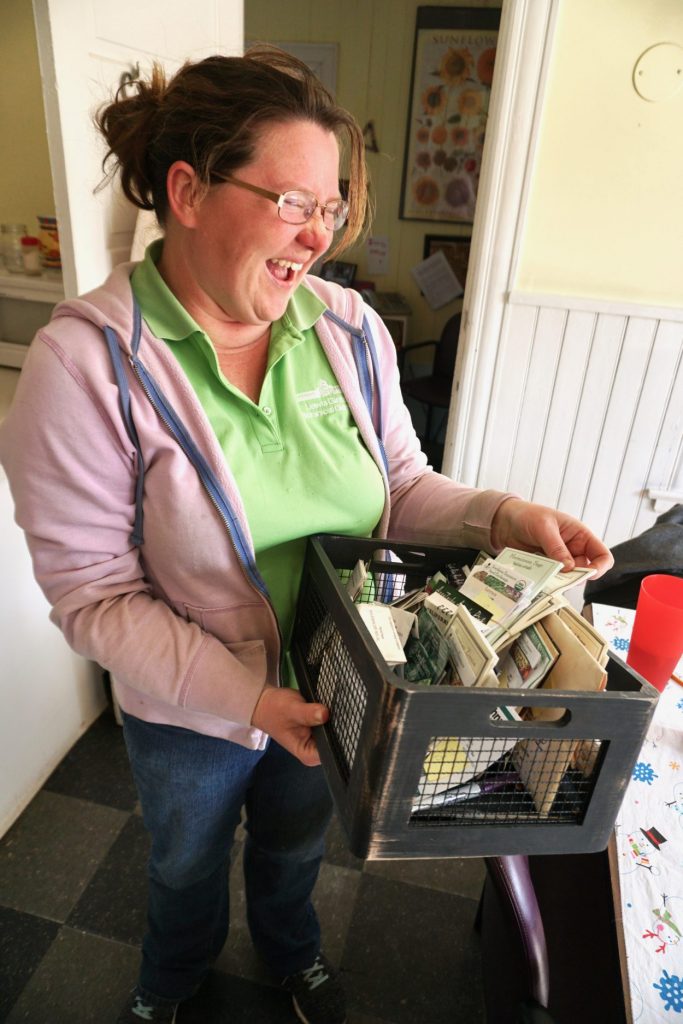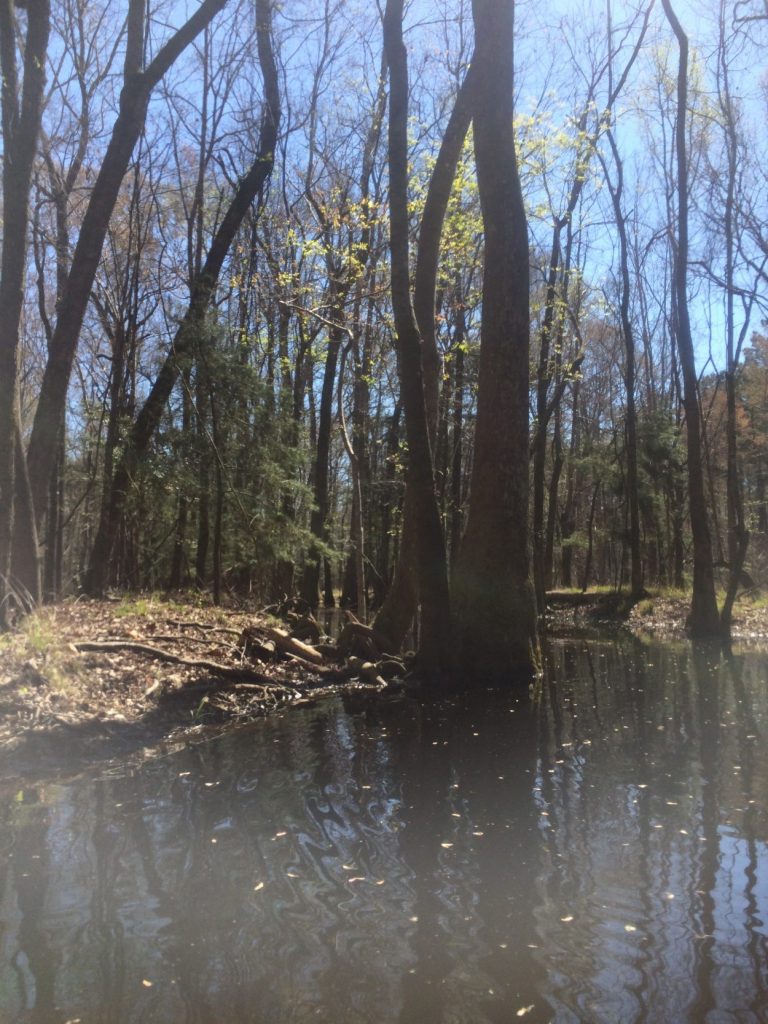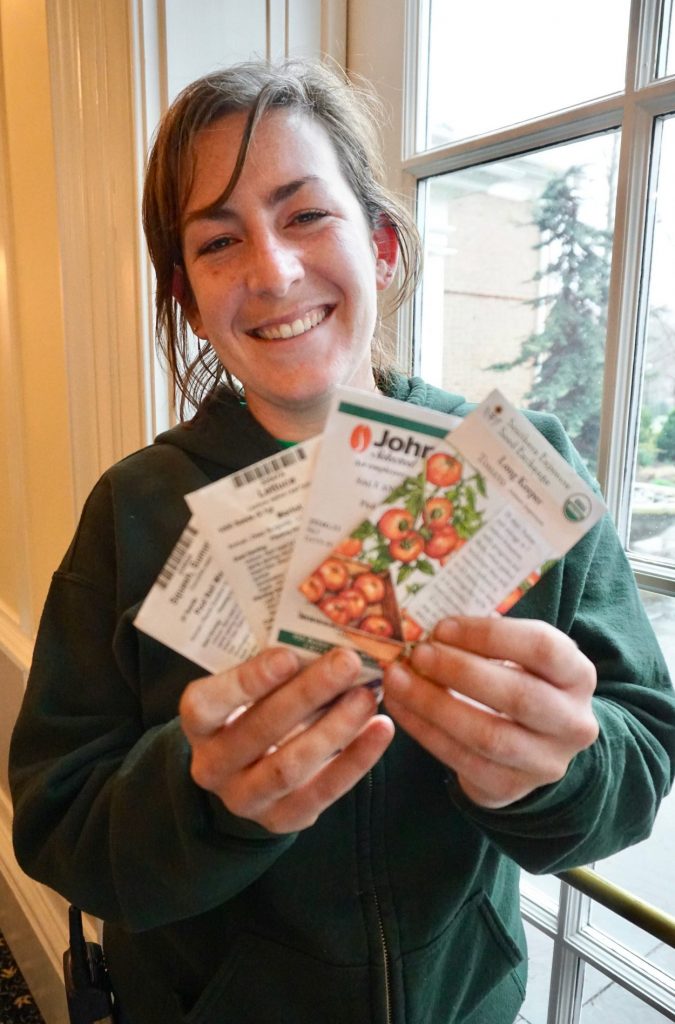Spreading Seeds!
The average last frost date is an exhilarating milestone in any gardener’s year — it means that all of those winter day-dreams of bright zinnias and juicy cucumbers, fresh herbs and crunchy corn, summer squash and cheerful sunflowers will soon come to fruition. And though our recent snowy days may make it hard to believe, our average last frost date is fast approaching here in Richmond — depending on where you live in the Richmond area, it falls somewhere between mid-April and mid-May.
Though many anxiously await that day of summer-crop sowing, I also thoroughly enjoy what happens behind-the-scenes at the Garden in the weeks and months leading up to it. I get to watch on chilly days as many of our horticulturists walk up to the Robins Visitors Center to pick up their deliveries of seeds for the coming season. I would equate the excitement of some of these plant-loving people receiving their little packets to that of a child coming downstairs to find a brand new bicycle with a big red bow on it. I think anyone that loves gardening can relate to this sentiment.
Seeds
I spoke with several horticulturists here at the garden that I happen to know get very excited when their little seed-filled boxes of spring appear in the mail room. When I asked Heather Veneziano, Children’s Garden Horticulturist, how she feels in the winter months when her seeds come in she said, “Everything’s dead and you’re so tired and you’re cold and then you get this magical packet . . . if you have seed packets you know the dark days are going to go away soon . . . you’ll be in a warm greenhouse sowing your plants, having a good time . . . it’s like my birthday.”
Chelsea Mahaffey, Conservatory Horticulturist echoed this feeling, “We do our planning and ordering in November and December when everyone is stuck inside. So it’s very exciting to actually see that spring’s around the corner and now I can actually start planting stuff out! When I got to sow these in February it was like spring was there.”
One specific variety that Veneziano says she’s particularly excited about trying this year is Carolina Gold rice, which she chose because of its historic significance. Carolina Gold rice was a hugely popular crop in the early days of South Carolina plantations. It is thought to have been named, not because of its color, but because it made the plantation owners so much money. It is important to remember that a large part of this crop’s story is that it was farmed by enslaved African people requiring hours and hours of harsh manual labor. I recently visited Charleston, S.C. and kayaked through a swamp that was to be used just for this purpose, growing rice. Our guide pointed out the raised berms of soil that are still present after hundreds of years — having been constructed by enslaved African people to control the flow of water to the rice crops. It is unfathomable to think about the amount of time it must have taken to reroute an entire swamp by hand. Veneziano has a passion for preserving seeds such as Carolina Gold rice and the stories that come with them. Not letting a historic variety of a plant die out also means never forgetting its story and the story of why it is here and the people whose lives it affected.
Mahaffey says she is excited about a crop that she chose for an entirely different reason — it has an intriguingly rare but useful trait. She is growing the Long Keeper Winter Storage Tomato (Solanum lycopersicum) from Southern Exposure Seed Exchange — a local seed company committed to producing non-GMO seeds that are acclimatized to our area. This tomato is very interesting – you pick it at the end of the summer when it is green or yellow and then you store it wrapped in tissue paper in boxes and it will slowly ripen over the course of the winter. Mahaffey is also the horticulturist for the
Kroger Community Kitchen Garden — the vegetable garden at Lewis Ginter that grows produce for FeedMore’s Meals on Wheels and Kids Cafe programs. So not only is she excited to try out a unique variety of tomato that she’s never grown before – but when choosing it she also thought about how incredible it would be to provide ripe, locally grown tomatoes to FeedMore in the dead of winter.
No wonder these horticulturists are so thrilled when they come to pick up a package of seeds. One “magical packet,” as Heather put it, might contain important stories from long ago never to be forgotten, or they could hold a unique solution to a very present problem. Tomatoes, grown in Virginia, that ripen in the winter could mean fewer tomatoes being shipped across miles and miles of road and sky to get here in the off-season. Heirloom varieties can reintroduce not only their accompanying history, but also traditions of self-sustainability through seed saving to preserve their unique and useful qualities.
As our last frost date approaches, it is truly humbling to think about all of the pasts and possibilities that will come to life when the seeds are sown. I cannot wait to take a summer stroll through the Garden to see all of the plants that have grown from what was once just another package waiting to be picked up from the Visitors Center mail room.
A few of Veneziano and Mahaffey’s favorite places to order seeds from are Southern Exposure Seed Exchange, Baker Creek Heirloom Seeds, and Johnny’s Selected Seeds. They have also both enjoyed growing historic seeds through our partnership with the Thomas Jefferson Center for Historic Plants. A wide array of seeds can also be found in the Garden Shop here at Lewis Ginter.



